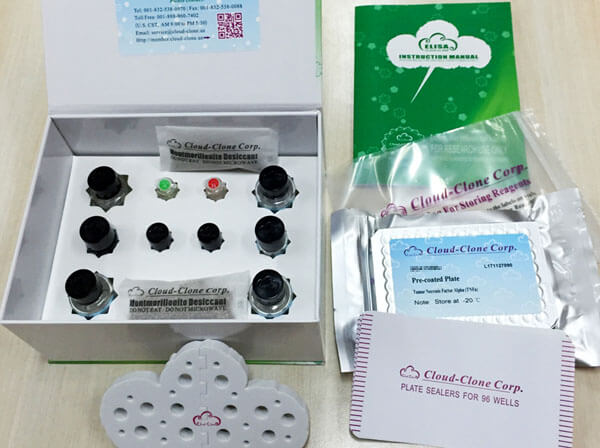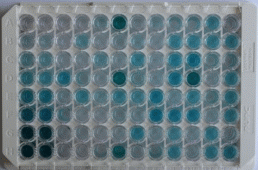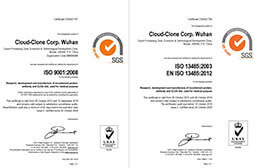ELISA Kit for Enolase, Neuron Specific (NSE) 

ENO2; Enolase 2; Gamma Enolase; 2-phospho-D-glycerate hydro-lyase; Neural enolase
- UOM
- FOB US$ 454.00 US$ 648.00 US$ 2,916.00 US$ 5,508.00 US$ 45,360.00
- Quantity
Overview
Properties
- Product No.SEA537Mu
- Organism SpeciesMus musculus (Mouse) Same name, Different species.
- ApplicationsEnzyme-linked immunosorbent assay for Antigen Detection.
Research use only - DownloadInstruction Manual
- CategoryEnzyme & KinaseTumor immunityInfection immunityNeuro science
Sign into your account
Share a new citation as an author
Upload your experimental result
Review

Contact us
Please fill in the blank.
Recovery
Matrices listed below were spiked with certain level of recombinant Enolase, Neuron Specific (NSE) and the recovery rates were calculated by comparing the measured value to the expected amount of Enolase, Neuron Specific (NSE) in samples.
| Matrix | Recovery range (%) | Average(%) |
| serum(n=5) | 82-102 | 87 |
| EDTA plasma(n=5) | 92-105 | 101 |
| heparin plasma(n=5) | 80-96 | 80 |
Precision
Intra-assay Precision (Precision within an assay): 3 samples with low, middle and high level Enolase, Neuron Specific (NSE) were tested 20 times on one plate, respectively.
Inter-assay Precision (Precision between assays): 3 samples with low, middle and high level Enolase, Neuron Specific (NSE) were tested on 3 different plates, 8 replicates in each plate.
CV(%) = SD/meanX100
Intra-Assay: CV<10%
Inter-Assay: CV<12%
Linearity
The linearity of the kit was assayed by testing samples spiked with appropriate concentration of Enolase, Neuron Specific (NSE) and their serial dilutions. The results were demonstrated by the percentage of calculated concentration to the expected.
| Sample | 1:2 | 1:4 | 1:8 | 1:16 |
| serum(n=5) | 78-98% | 81-89% | 81-94% | 84-93% |
| EDTA plasma(n=5) | 98-105% | 87-103% | 97-105% | 87-97% |
| heparin plasma(n=5) | 79-101% | 87-101% | 78-91% | 79-96% |
Stability
The stability of kit is determined by the loss rate of activity. The loss rate of this kit is less than 5% within the expiration date under appropriate storage condition.
To minimize extra influence on the performance, operation procedures and lab conditions, especially room temperature, air humidity, incubator temperature should be strictly controlled. It is also strongly suggested that the whole assay is performed by the same operator from the beginning to the end.
Reagents and materials provided
| Reagents | Quantity | Reagents | Quantity |
| Pre-coated, ready to use 96-well strip plate | 1 | Plate sealer for 96 wells | 4 |
| Standard | 2 | Standard Diluent | 1×20mL |
| Detection Reagent A | 1×120µL | Assay Diluent A | 1×12mL |
| Detection Reagent B | 1×120µL | Assay Diluent B | 1×12mL |
| TMB Substrate | 1×9mL | Stop Solution | 1×6mL |
| Wash Buffer (30 × concentrate) | 1×20mL | Instruction manual | 1 |
Assay procedure summary
1. Prepare all reagents, samples and standards;
2. Add 100µL standard or sample to each well. Incubate 1 hours at 37°C;
3. Aspirate and add 100µL prepared Detection Reagent A. Incubate 1 hour at 37°C;
4. Aspirate and wash 3 times;
5. Add 100µL prepared Detection Reagent B. Incubate 30 minutes at 37°C;
6. Aspirate and wash 5 times;
7. Add 90µL Substrate Solution. Incubate 10-20 minutes at 37°C;
8. Add 50µL Stop Solution. Read at 450nm immediately.

Test principle
The test principle applied in this kit is Sandwich enzyme immunoassay. The microtiter plate provided in this kit has been pre-coated with an antibody specific to Enolase, Neuron Specific (NSE). Standards or samples are then added to the appropriate microtiter plate wells with a biotin-conjugated antibody specific to Enolase, Neuron Specific (NSE). Next, Avidin conjugated to Horseradish Peroxidase (HRP) is added to each microplate well and incubated. After TMB substrate solution is added, only those wells that contain Enolase, Neuron Specific (NSE), biotin-conjugated antibody and enzyme-conjugated Avidin will exhibit a change in color. The enzyme-substrate reaction is terminated by the addition of sulphuric acid solution and the color change is measured spectrophotometrically at a wavelength of 450nm ± 10nm. The concentration of Enolase, Neuron Specific (NSE) in the samples is then determined by comparing the O.D. of the samples to the standard curve.
Giveaways
Increment services
-
 Single-component Reagents of Assay Kit
Single-component Reagents of Assay Kit
-
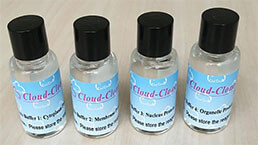 Lysis Buffer Specific for ELISA / CLIA
Lysis Buffer Specific for ELISA / CLIA
-
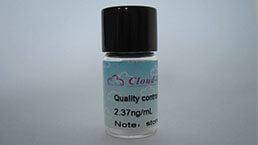 Quality Control of Kit
Quality Control of Kit
-
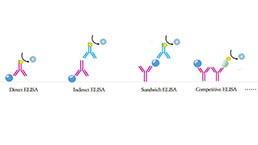 ELISA Kit Customized Service
ELISA Kit Customized Service
-
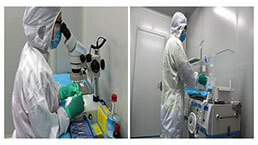 Disease Model Customized Service
Disease Model Customized Service
-
 Serums Customized Service
Serums Customized Service
-
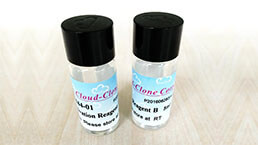 TGFB1 Activation Reagent
TGFB1 Activation Reagent
-
 Real Time PCR Experimental Service
Real Time PCR Experimental Service
-
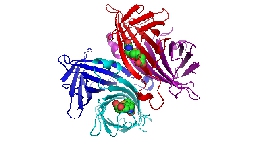 Streptavidin
Streptavidin
-
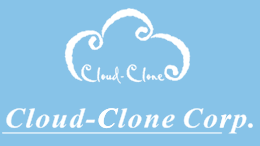 Fast blue Protein Stain solution
Fast blue Protein Stain solution -
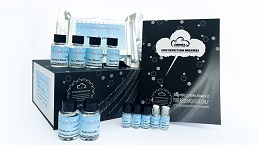 Single-component Reagents of FLIA Kit
Single-component Reagents of FLIA Kit
-
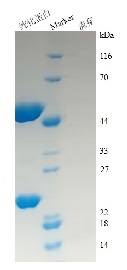 Streptavidin-Agarose Beads
Streptavidin-Agarose Beads
Citations
- The Anti-Inflammatory and Neuroprotective Effects of Ghrelin in Subarachnoid Hemorrhage-Induced Oxidative Brain Damage in RatsLiebert: 20091210
- Melatonin treatment protects against spinal cord injury induced functional and biochemical changes in rat urinary bladderWiley: source
- Ginkgo biloba Enhances the Anticonvulsant and Neuroprotective Effects of Sodium Valproate Against Kainic Acid-induced Seizures in MiceMedwell: 2011679690
- Comparative gene expression profiling analysis of lymphoblastoid cells reveals neuron‐specific enolase gene (ENO2) as a susceptibility gene of heroin dependencePubMed: 21995595
- Advanced glycation end products as an upstream molecule triggers ROS-induced sFlt-1 production in extravillous trophoblasts: A novel bridge between oxidative stress and preeclampsiaPubmed: 24144948
- Therapeutic time window and underlying therapeutic mechanism of breviscapine injection against cerebral ischemia/reperfusion injury in rats.Pubmed: 24291152
- Detection of β-amyloid oligomers as a predictor of neurological outcome after brain injury.Pubmed: 23540266
- A portable and quantitative enzyme immunoassay of neuron-specific enolase with a glucometer read outRsc: Source
- The effect of therapeutic hypothermia after cardiopulmonary resuscitation on ICAM-1 and NSE levels in sudden cardiac arrest rabbitsPubmed:25111247
- Elevated levels of serum sICAM-1 in asphyxiated low birth weight newbornsPubmed:25358349
- Preconditioning effect of (S)-3,5-dihydroxyphenylglycine on ischemic injury in middle cerebral artery occluded Sprague-Dawley rats.Pubmed:25562631
- 高迁移率族蛋白B1和神经元烯醇化酶对心脏骤停大鼠复苏后脑损伤评价的研究Journal: Fulltext
- Blood–Brain Barrier Function and Biomarkers of Central Nervous System Injury in Rickettsial versus Other Neurological Infections in LaosPubMed: 26055741
- Preconditioning effect of (S)-3, 5-dihydroxyphenylglycine on ischemic injury in middle cerebral artery occluded Sprague–Dawley ratsPubMed: 25562631
- S100B and NSE serum concentrations after simulated diving in ratsPubMed: 26462746
- The effect of electroporation of a lyotroic liquid crystal Genistein-based formulation in the recovery of murine melanoma lesionsPubMed: 26184156
- Isoflurane Post-Treatment Improves Outcome after an Embolic Stroke in RabbitsPubMed: 26645542
- Волгоградский государственный медицинский университетuploads:dsovet
- Synthesis of sunflower-like gold nanostructures and their application in electrochemical immunoassays using the nanogold-triggered hydrogen evolution reactionarticlelanding:c5ay03174e
- 右美托咪定对脑膜瘤切除术患者血清S100β 蛋白及神经元特异性烯醇化酶的影响article:9794
- Perfusion of gastrodin in abdominal aorta for alleviating spinal cord ischemia reperfusion injuryscience:S1995764516300955
- SERUMSKA RAZINA ZA NEURON SPECIFIČNE ENOLAZE KAO BILJEG ISHEMIJSKO-REPERFUZIJSKOG OŠTEĆENJA U BOLESNIKA PODVRGNUTIH KAROTIDNOJ ENDARTEREKTOMIJI262238
- Functional and structural changes of the urinary bladder following spinal cord injury; treatment with alpha lipoic acidpubmed:27490041
- Rosuvastatin improves myocardial and neurological outcomes after asphyxial cardiac arrest and cardiopulmonary resuscitation in ratspubmed:28076830
- Hydrogen-Rich Saline Attenuates Brain Injury Induced by Cardiopulmonary Bypass and Inhibits Microvascular Endothelial Cell Apoptosis Via the PI3K/Akt/GSK3β …pubmed:29040978
- Intra-arterial human urinary kallidinogenase alleviates brain injury in rats with permanent middle cerebral artery occlusion through PI3K/AKT/FoxO1 signaling pathwayPubmed:29510144
- Epigallocatechin-3-Gallate Reduces Neuronal Apoptosis in Rats after Middle Cerebral Artery Occlusion Injury via PI3K/AKT/eNOS Signaling PathwayPubmed:29770336
- S100B, NSE and MMP-9 fail to predict neurologic outcome while elevated S100B associates with milder initial clinical presentation after aneurysmal subarachnoid …Pubmed:29801873
- Nitrosative stress indices in dogs with neurological form of canine distemperDoi: 10.22099/IJVR.2018.4943
- Naomaitai Ameliorated Brain Damage in Rats with Vascular Dementia by PI3K/PDK1/AKT Signaling Pathway
- Effects of Conivaptan versus Mannitol on Post-Ischemic Brain Injury and Edema
- The Administration of the New Pyrimidine Derivative—4-{2-[2-(3, 4-Dimethoxyphenyl)-Vinyl]-6-Ethyl-4-Oxo-5-Phenyl-4H-Pyrimidine-1-Il} Benzsulfamide Restores the …
- Neuroprotective effect of poly (lactic-co-glycolic acid) nanoparticle-bound brain-derived neurotrophic factor in a permanent middle cerebral artery occlusion …Pubmed: 32214270
- Exosomes of Antler Mesenchymal Stem Cells Improve Postoperative Cognitive Dysfunction in Cardiopulmonary Bypass Rats through Inhibiting the TLR2 …Pubmed: 32300366
- Neuroprotective effect of CTRP3 overexpression against sevoflurane anesthesia-induced cognitive dysfunction in aged rats through activating AMPK/SIRT1 and …Pubmed: 32432773
- Effects of Circadian Rhythm Disorder on the Hippocampus of SHR and WKY Rats
- The role of light desynchronosis in the development of stress-induced aging
- ИЗУЧЕНИЕ ЦЕРЕБРОПРОТЕКТОРНОГО ДЕЙСТВИЯ ПРЕПАРАТОВ РАЗЛИЧНЫХ ФАРМАКОЛОГИЧЕСКИХ ГРУПП В УСЛОВИЯХ …
- Investigation of Library Input on Aptamers Selection Efficiency Using Capillary Electrophoresis
- The effect of doxycycline on neuron-specific enolase in patients with traumatic brain injury: a randomized controlled trial34262678
- Perillaldehyde Alleviates Spinal Cord Ischemia-Reperfusion Injury Via Activating the Nrf2 Pathway34399353
- Evaluation of serum neuron specific enolase levels among patients with primary and secondary burning mouth syndrome34644195




